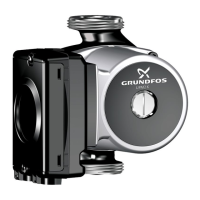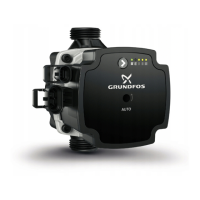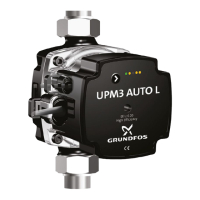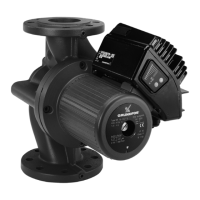Control modes, user interface and settings
16
Medium UPM
6
System analyser
From the preset reference duty point, the pump will
immediately start to analyse the heating pattern.
The system resistance (K
sys
) is logged and based on
this data, a more optimal curve for operation is
selected.
Note: K
sys
= m
3
/h to create a system pressure loss of
1 bar.
Fig. 16 K
sys
-values logged for the system analyser
If the actual duty point deviates from the reference
duty point over time, the pump will automatically adjust
its performance accordingly. If a tendency of operation
in area A is shown, the performance of the pumps is
too high. The pump will then select a lower
proportional curve. In other words, if the requirement
of the heating system exceeds the reference duty
point, the pump will choose a higher proportional
pressure curve. Should the requirement be lower, a
lower curve will be chosen.
Curve selector
Fig. 17 Duty point on selected proportional pressure curve
Note: The arrows symbolise the change of the
proportional pressure curve.
New reference setting
When changing the proportional pressure curve setting
to adapt to the requirements of the heating system,
AUTO
ADAPT
automatically sets a new reference duty
point. From the new setting, the process starts over
again: AUTO
ADAPT
will continuously adapt to changes
in the heating pattern.
Fig. 18 New lower proportional pressure curve
TM06 0845 1014TM06 0849 1014
30 30.5 31 31.5 32 32.5 33 33.5 34
0
0.02
0.04
0.06
0.08
0.1
0.12
0.14
0.16
0.18
0.2
Area A
Area B
K-value
Time [days]
Reference duty
point
TM06 0850 1014

